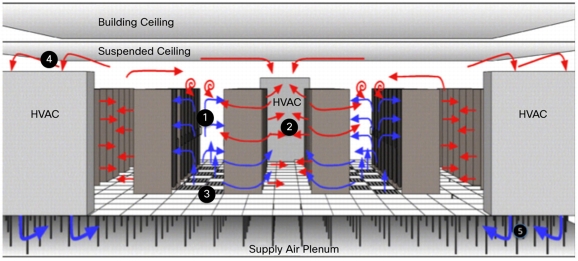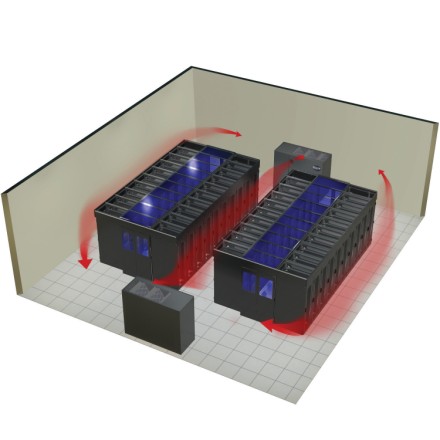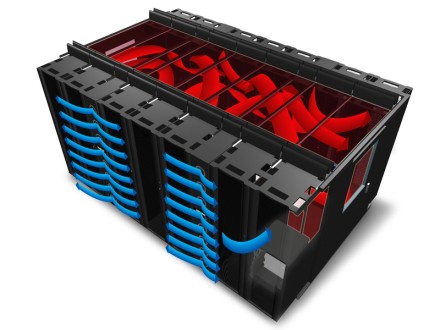With the impending expansion in DC2 and DC3 we thought it was a timely opportunity to discuss cooling methods for Data Centres.
Data centre cooling has long been a contentious issue. Traditionally the whole room was chilled to approximately 20 degrees but these days there's far more efficient ways to keep server equipment cool. In this post we hope to summarise these techniques and hopefully clear up a few misconceptions.
From traditional whole room cooling to cold aisle containment through to hot aisle containment the options are vast and complicated.
Whole room cooling is traditionally the cheapest to implement however it’s a simple concept that basically cools the whole room to provide cold air for the equipment. The problem with this method is the lack of efficiency. The cool air is supplied throughout the entire room and when it’s passed through equipment the resultant warm air is mixed back with the cold air. This means the coolers have to work harder to keep the room cooled which in turn increased the overall PUE of the data centre and either increases your final cost or decreases your profit.

This leads on to Cold Aisle Containment (CAC). In this method the racks are installed facing each other and the area between them is contained. This area is then filled with cool air which is then forcefully fed through the equipment and released into the room. This method is generally deployed in existing data centres to improve efficiency but requires that all cold aisles must be contained to realise any real benefit as containing only some of the cold aisles would yield little benefit since warm air is still mixing with the cold air in non-contained aisles. Another issue with CAC is the relatively small amount of cold air stored in the containment areas. In the case of a cooling outage the equipment will very rapidly use the contained cold air resulting in warm air being used for the equipment versus the other scenario mentioned where the volume of cooled air throughout the room is greater which allows the equipment to stay cooled for longer. In a typical scenario the volume of cold air in an uncontained cold aisle is approximately 17 times greater than the cold air volume found in a contained cold aisle.

Finally the reverse approach is Hot Aisle Containment (HAC). This method is effectively the reverse of CAC, whereby the racks are installed facing back to back with the area between them being contained.
In this scenario the rest of the room is then flooded with cold air which passes through the equipment into the contained hot aisles. This hot air can then be passed back through the coolers and reused.
The solution is implemented with coolers located “In-Row” alongside the computer equipment with variable fans to allow the room to maintain a constant temperature irrelevant of the spread of heat coming from the equipment. This effectively means that if a particular area of a data centre facility requires more cooling than another the In-Row cooling unit’s will vary accordingly to suit the localised demand. This is in contrast with whole room cooling where the entire room has a constant supply of air regardless of localised cooling demands which leads to warm areas and significant drops in efficiency. Additionally, the overall efficiency of air-conditioners is increased when there is a significant difference between the hot return air being fed into the cooling unit versus the cold air being supplied. In a typical HAC scenario the temperature difference between the server exhaust air and the room air is approximately 17c which means that if the room temperature is maintained at 22c the exhaust temp is around 38-39c.

This approach of Hot Aisle Containment has been successfully utilized by Sanity Technology in DC1 to achieve a PUE of 1.3, which makes us one of the most efficient facilities in Brisbane.